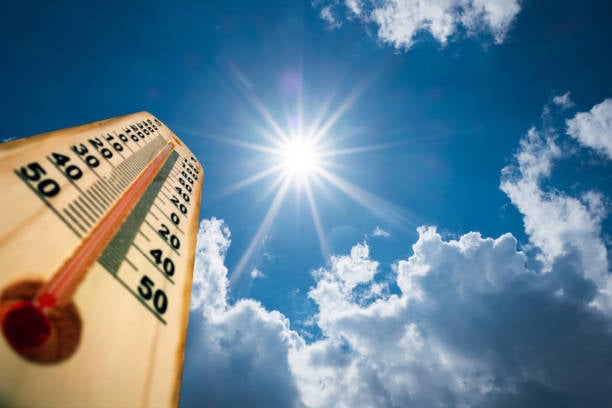The 1925 Heat Wave: Alabama’s Hottest Day and the Brutal “Blast Furnace”
By Savannah Logan
On September 5th in 1925, Alabama experienced its hottest temperature on record, according to a recent Facebook post by James Spann. The thermometer at Centreville, Bibb County, soared to a blistering 112°F. This record, still unbroken, was observed by Josiah Kennedy, the local weather observer. Although Kennedy logged the observation in his journal on September 6, it reflected the previous day’s extreme heat. The summer of 1925 was marked by a relentless heat wave, earning the nickname “1925 Blast Furnace,” as described by renowned weather expert J.B. Elliott in a post on AlabamaWX.com.
The heat wave, which started in July and intensified in August, reached its peak in September. Centreville’s 112°F remains Alabama’s highest temperature ever recorded, while Birmingham hit 106°F the same day. By any measure, this was one of the state’s most brutal heat waves, impacting thousands who had little means of escape.
What made the 1925 heat wave particularly punishing was the lack of air conditioning. It wasn’t until after World War II that air conditioning became widespread. The suffering caused by such extreme heat, paired with minimal cooling options, left a deep mark on those who lived through it. Elliott, who grew up in West Alabama, shared how residents tried to cope. In one example, some families planted kudzu on the west sides of their homes to block the relentless afternoon sun.
Alabama’s heat was oppressive. Over three months (July-September 1925), 36 days reached 95°F or higher, 14 days surpassed 100°F, and six days in a row topped 102°F beginning on September 3. This September heat was unusual as Alabama’s hottest months are typically June, July, and August. However, that year the peak came unusually late, showing the fierce unpredictability of the weather.
Heat waves and droughts often go hand in hand, and 1925 was no exception. Rainfall during the heat wave was minimal. In September 1925, only 0.03 inches of rain fell during 12 days where temperatures reached 100°F or higher. The preceding month was similarly dry, with a mere 0.04 inches of rainfall after the heat turned on August 11.
While Alabama had faced heat waves before, the intensity and duration of this one were particularly harsh. Elliott recalled how even two years later, in September 1927, Alabama endured another wave of 100°F temperatures, coupled with almost no rainfall, further compounding the hardship for those without the modern comforts we now take for granted.
James Spann has often cited the 1925 heat wave as a benchmark for extreme weather in the state. Spann and Elliott both highlighted how, despite modern heatwaves, few can compare to the grueling summer of 1925, particularly because of the era’s limited technology for coping with heat. As Spann noted, the heat arrived outside of the typical “hottest” months, extending human suffering well into September.
Even today, nearly a century later, the “1925 Blast Furnace” stands out in Alabama’s weather history as one of the most severe heat waves ever experienced.
(Source: James Spann)


















